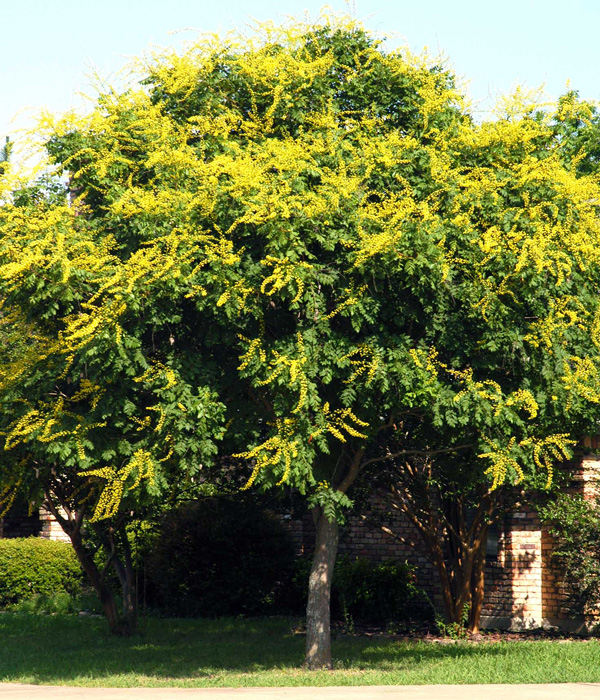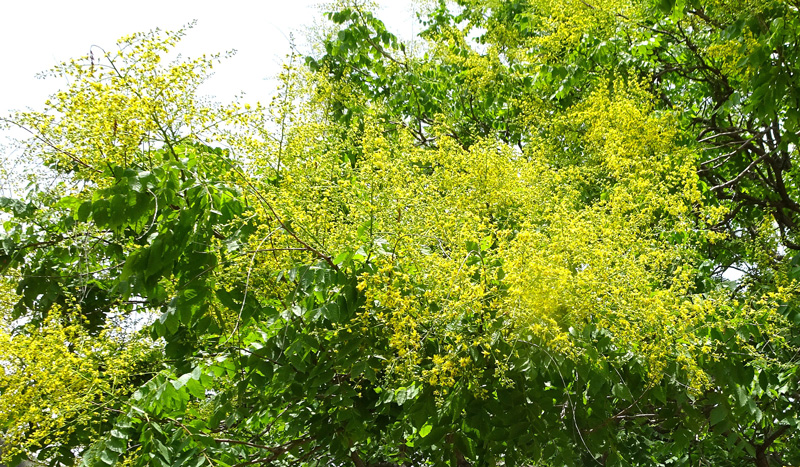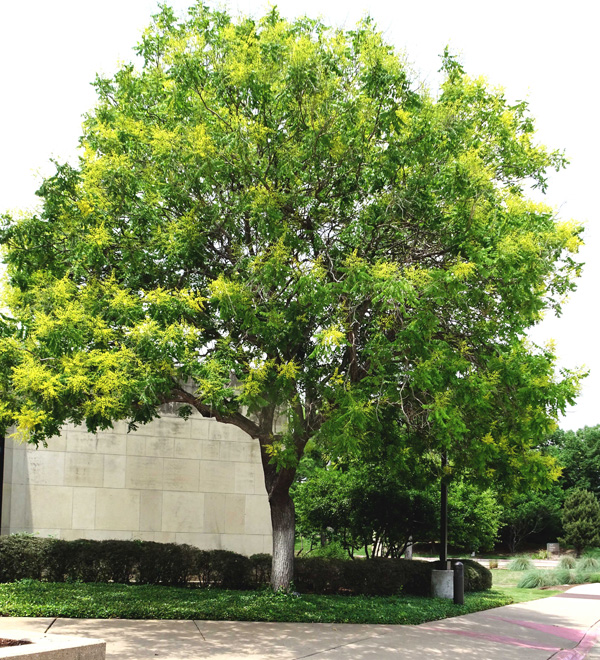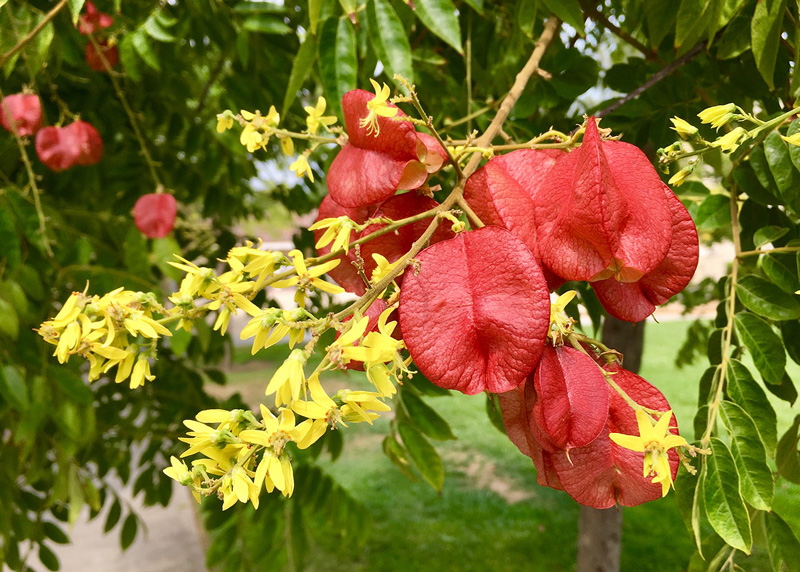Golden Raintree
(Photos by Steve Huddleston unless otherwise noted.)
Here’s a ray of sunshine popping through all the spring showers. A medium-sized tree that tops out at 25 or 30 ft. tall, making it the perfect choice for today’s smaller landscape.

Golden raintrees have spreading branches but rounded crowns. They’re tolerant of urban conditions, including drought, heat, wind, and air pollution.

The trees grow quickly and bloom at an early age. Its buttery golden flowers are borne in 12- to 15-inch panicles at the ends of every branch. They are followed by interesting fruit capsules that resemble Chinese lanterns. They flower in April in Central Texas into May in North Texas.
As the flowers fall, they cover the ground with a golden carpet, giving rise to the plant’s common name.
Each of those papery “lanterns” contains three black seeds. The capsules are green as they’re young, maturing to brown as they mature. They persist through fall and into the winter. Floral designers sometimes clip them and use them in their arrangements.

Golden raintrees aren’t always dependable with their fall color, but when conditions are right, they can be stunning. Reds, oranges, and yellows can predominate, making fall color just icing on the cake.
One of the main drawbacks for golden raintree is availability. It’s been around forever, but it’s still uncommon in the Texas nursery trade. Ask at your favorite independent retail garden center. You might strike gold!

Scattered fun facts about Golden Raintrees…
• Scientific name: Koelreuteria paniculata, in honor of German botanist Gottlieb Koelreuter.
• Native home: China, Korea, Japan.
• Plant family: Sapindaceae, the Soapberry family.
• Evergreen/Deciduous: Deciduous.
• Leaf description: Compound leaves are large (in excess of 10 inches) and dark green during growing season. Fall color may be yellow to orange some years.
• Winter hardiness: USDA Plant Hardiness Zones 5-9 (all of Texas).
• Sun or shade: full sun.
• Soil preference: well adapted to most.
• Pest problems: attractive to boxelder bugs.
• Invasive? Not especially, but does reseed within same landscape.
• Wood can be brittle during weather extremes.

Note: This species is not to be confused with a close relative, Chinese flame tree (Koelreuteria bipinnata). It blooms in the summer and produces very showy pink lanterns in the fall. Unfortunately, it is far less winter-hardy and is suited only to the Texas Gulf Coast. Even then, February 2021 killed a substantial portion of the specimens of this plant across South Texas.
